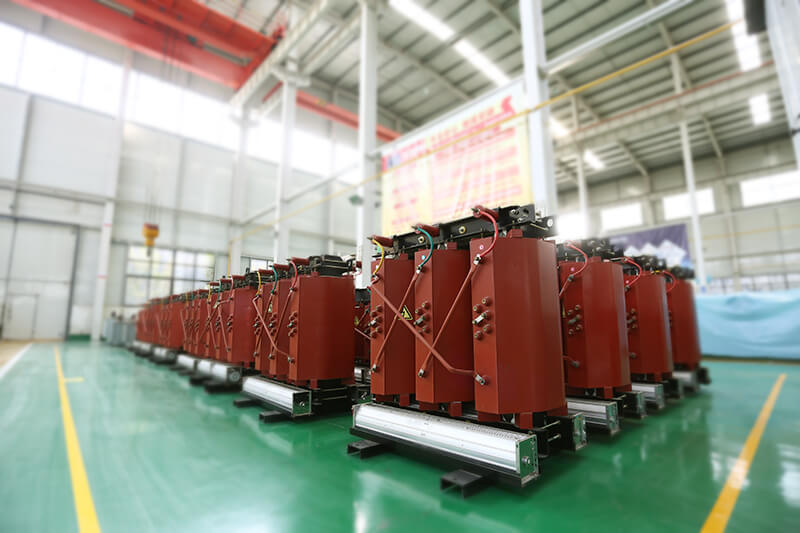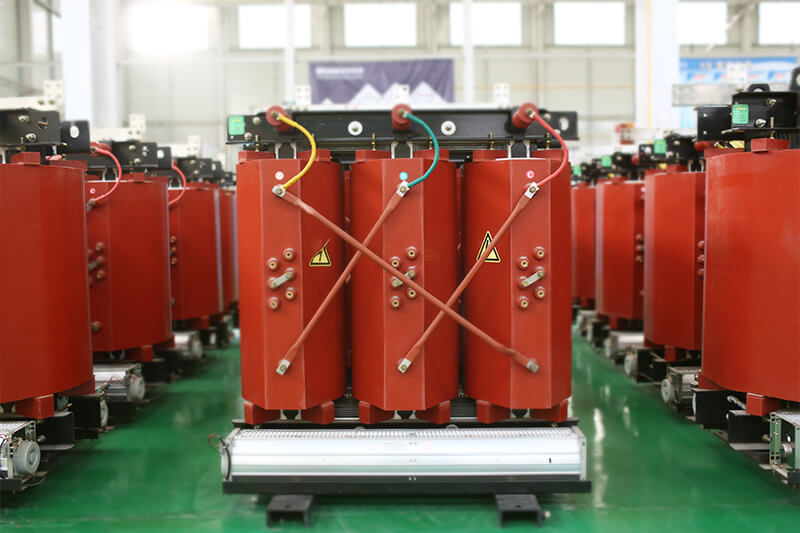The different cooling way in oil type transformers and dry type transformers
Oil-immersed transformers use oil as the main insulation way and rely on oil as the cooling medium (self-cooling. air-cooling. water-cooling). Generally, the main transformer of the booster station is oil-immersed, with a ratio of 20KV / 500KV. Dry-type transformers rely on air convection for cooling. The ratio of small-capacity transformers is 6000V / 400V. Compared with oil-type transformers, the main difference between dry-type transformers and oil-type transformers is whether there is oil in the transformer or not.

The main differences from appearance, voltage,places in dry type transformer and oil type transformer.
1. From the appearance, the package is different. The dry-type transformer can see the iron core and the coil while the oil-type transformer can see the shell of the transformer.
2. The leading forms are different. Most of the dry-type transformers use silicone rubber sleeves, while the oil-type transformers mostly use porcelain sleeves.
3. The capacity and voltage are different. Dry type transformers are generally suitable for power distribution. The capacity is mostly below 1600KVA and the voltage is below 10KV. while oil-type transformers can achieve the full capacity from small to large. The voltage level also achieves all voltages. The UHV 1000KV test line under construction in China must use an oil transformer.
4. Insulation and heat dissipation are different. Dry type transformers are generally insulated with resin relying on natural air cooling and large-capacity cooling by fans, while oil type transformers are insulated by insulating oil. Go to the heat sink of the transformer for heat dissipation.

5. From the application site, dry type transformers are mostly used in places that require “fireproof and explosion-proof” and generally are easy to use in large buildings and high-rise buildings, while oil type transformers may have oil sprayed or leaked after an “incident” that caused by fire, most of them are used outdoors that there are places where “accident oil pools” need prepared.
6. Different load-bearing capacity, general dry-type transformers should run at rated capacity, while oil-type transformers have better overload capacity.
7. The cost is different. For same capacity of transformers, the price of dry-type transformers is higher than that of oil type transformers.
8.In humid environment we usually adopt oil immersed transformer. If dry type transformer is used, it must be equipped with forced air cooling equipment. Generally speaking, the heat dissipation effect of oil immersed transformer is better than dry type transformer.
8.For output and usage, the dry type transformer voltage get 35kV, and the capacity is relatively small compared to the oil type transformer which is about 2500kVA. Because the dry type transformer manufacturing process is relatively high compared to the oil-grade transformer with the same voltage grade and capacity, The cost is also high. In terms of usage, the oil is still increasing. However, because of the advantages of dry type transformer is equipped with environmental protection, flame retardant, anti-shock, etc. It is often used in indoor and other demanding power supply and distribution occasions, such as hotels, office buildings, high-rise construction and so on.